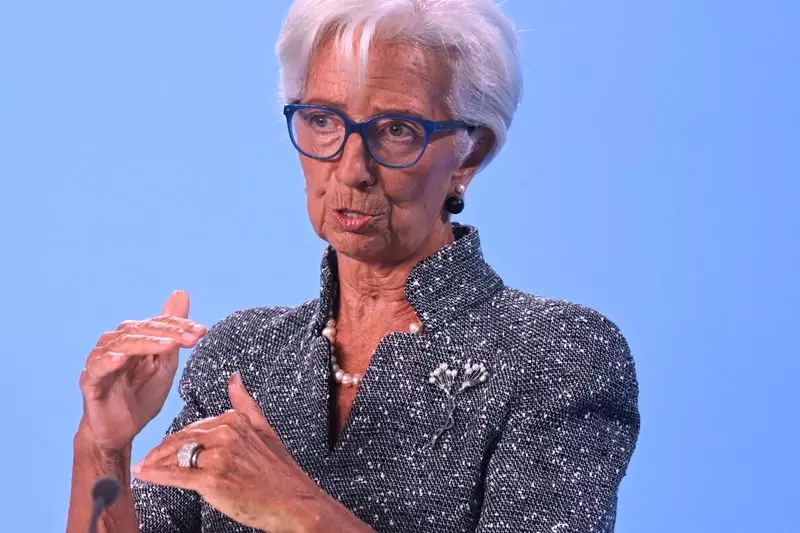The recent policy meeting of the European Central Bank (ECB) held considerable implications for the Eurozone’s economic trajectory. With a backdrop of political instability and trade uncertainties, the ECB made the crucial decision to reduce interest rates for the fourth time this year. This article delves into the implications of the ECB’s actions and the strategic direction articulated by President Christine Lagarde, highlighting the intricate interplay of inflation expectations, trade tensions, and economic growth forecasts.
In an environment characterized by fluctuating economic indicators and external pressures, the ECB’s decision to lower interest rates is a significant maneuver primarily aimed at stimulating growth. The cut comes at a time when Europe is grappling with the potential fallout from political unrest and looming trade wars, particularly concerning transatlantic relations with the United States. By reducing the cost of borrowing, the ECB hopes to instigate consumer spending and spur investment—a necessity in a landscape riddled with uncertainty.
Lagarde’s comments reinforced the resolve to tackle inflation and stimulate the economy, stating that the “direction of travel” is apparent, though complexities remain. The focus on the prospect of further rate adjustments in 2025 underscores the ECB’s proactive stance in navigating these turbulent waters.
Central to the ECB’s rationale for the rate cut is the ongoing issue of inflation. Lagarde highlighted that the impact of tariffs on inflation remains ambiguous due to the multifaceted nature of economic factors at play. This introduces a layer of uncertainty that hinders predictability in inflationary trends. While there is a consensus within the Governing Council that inflation is generally trending toward the target of 2%, Lagarde notes that confidence in this projection hinges on the composition of inflation itself. A shift in the types of inflationary pressures could drastically influence the ECB’s policy strategies.
In her remarks, she acknowledged that inflation risks are no longer skewed solely to one side, suggesting an evolving economic climate. This two-sided perspective prompts the ECB to remain vigilant in assessing not just the positive signals from inflation data, but also the potential for downward pressures stemming from waning consumer confidence.
Trade tensions are a pressing concern, as they can severely impact economic growth throughout the Eurozone. Lagarde pointed out that friction in global trade might dampen exports and contribute to a slowdown in the overall economy. The geopolitical landscape introduces further risks, particularly with rising costs in energy and freight, which could exert upward pressure on inflation. This dual threat—on one hand promoting inflationary ‘upside risks’ while on the other suppressing growth—illustrates the delicate balance the ECB must maintain in its policy formulation.
Moreover, Lagarde highlighted the influence of extreme weather events and issues linked to climate change as potential stimulants of food price inflation. It underscores a broader recognition that inflation does not merely reflect monetary policy but is also shaped by external environmental factors.
As the ECB navigates these complexities, the outlook for the Eurozone economy remains cautious. While there is optimism about gradually strengthening economic conditions in the long-term, Lagarde noted that such growth is anticipated to progress more slowly than previously recognized. This sober prediction signals to investors that, while monetary policy may facilitate improved economic conditions, the challenges ahead require sustained attention and agility in response.
The ECB’s commitment to maintaining a vigilant stance on inflation and adjusting interest rates accordingly demonstrates a thoughtful approach in a fluctuating economic environment. The insistence on real-time assessments highlights the ECB’s awareness that past data may not adequately predict future conditions. Lagarde’s assurances that the Governing Council will not bind itself to a rigid interest rate path allow for necessary flexibility in response to evolving economic signals.
The ECB’s latest interest rate cut is a carefully calculated response to a tumultuous economic landscape marked by political uncertainty and global trade conflicts. By acknowledging the intricate dynamics of inflation and the complexities of external influences, the ECB positions itself as an adaptable entity committed to stabilizing the Eurozone economy. As we move toward 2025, the path forward remains uncertain, yet the central bank’s willingness to engage with these uncertainties underscores its pivotal role in shaping the economic future of Europe.

